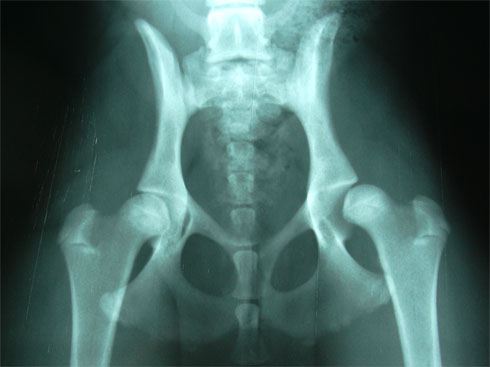The 7 Basic Questions About Hip Dysplasia


1. What is hip dysplasia?
It is one of the most frequent diseases in dogs, especially large breeds.


2. What is the disease?
In a mismatch between the head of the femur and the acetabulum, that is, a bad gear of the hip joint. The femoral head is partially outside the acetabulum and the hip cannot work properly.
3. Does it affect some races more than others?
Yes, hip dysplasia practically does not exist in Greyhounds and yet it is very common in San Bernardo and Mastines. It is also quite common in the German Shepherd, the Golden Retriever and the Rottweiler among other breeds.
4. How to know the severity of dysplasia?
There are several degrees of dysplasia, but there are also different ways to measure it, the most common being an X-ray that should be done on dogs near the year of life. This x-ray must be performed in a very specific position and with the muscles relaxed, so it is usually necessary to anesthetize the dog.
5. What are the symptoms?
Normally lameness in dogs from 5 to 10 months but can remain without problems during youth and adulthood and debut with major problems in the geriatric period. Movement to the sides of the hips may also be indicative of hip dysplasia.
6. Does it have anything to do with osteoarthritis?
They are two different problems, but hip dysplasia, the mismatch of the joint, can cause over time that this joint degenerates and ends up suffering from osteoarthritis in the hip. Osteoarthritis is what hurts, especially in old age. Dysplasia may be more responsible for the dog’s development of osteoarthritis.
7. Is there treatment?
There are several treatments, various surgeries before the year of life and other methods such as hip prosthesis when the dog is older and has finished growing.
We also have palliative treatments such as anti-inflammatories or cartilage protectors (chondroprotectors). In very serious cases you can put a canine wheelchair and the dog continues to walk but without bearing the burden of its weight.
Ortocanis.com Technical Team
Recent Posts
What side effects do anti-inflammatories have in dogs?
Anti-inflammatory drugs, called NSAIDs (nonsteroidal anti-inflammatory drugs), are the most commonly prescribed pain reliever in…
Exercises to strengthen the dog’s hind legs
Improving the muscles of the hind limbs in dogs is an interesting option both in…
What to do with a dog that has back problems
Dogs can have health problems related to their limbs. But they can also have back…
Total or partial rupture of cruciate ligament in dogs
One of the most frequent injuries that dogs usually suffer is the rupture of one…
Solutions to hip dysplasia in dogs
Hip dysplasia in dogs is one of their most common inherited bone diseases. It is…
How to treat patellar luxation in dogs?
There is talk of patellar dislocation in dogs, when the patella, a small bone located…